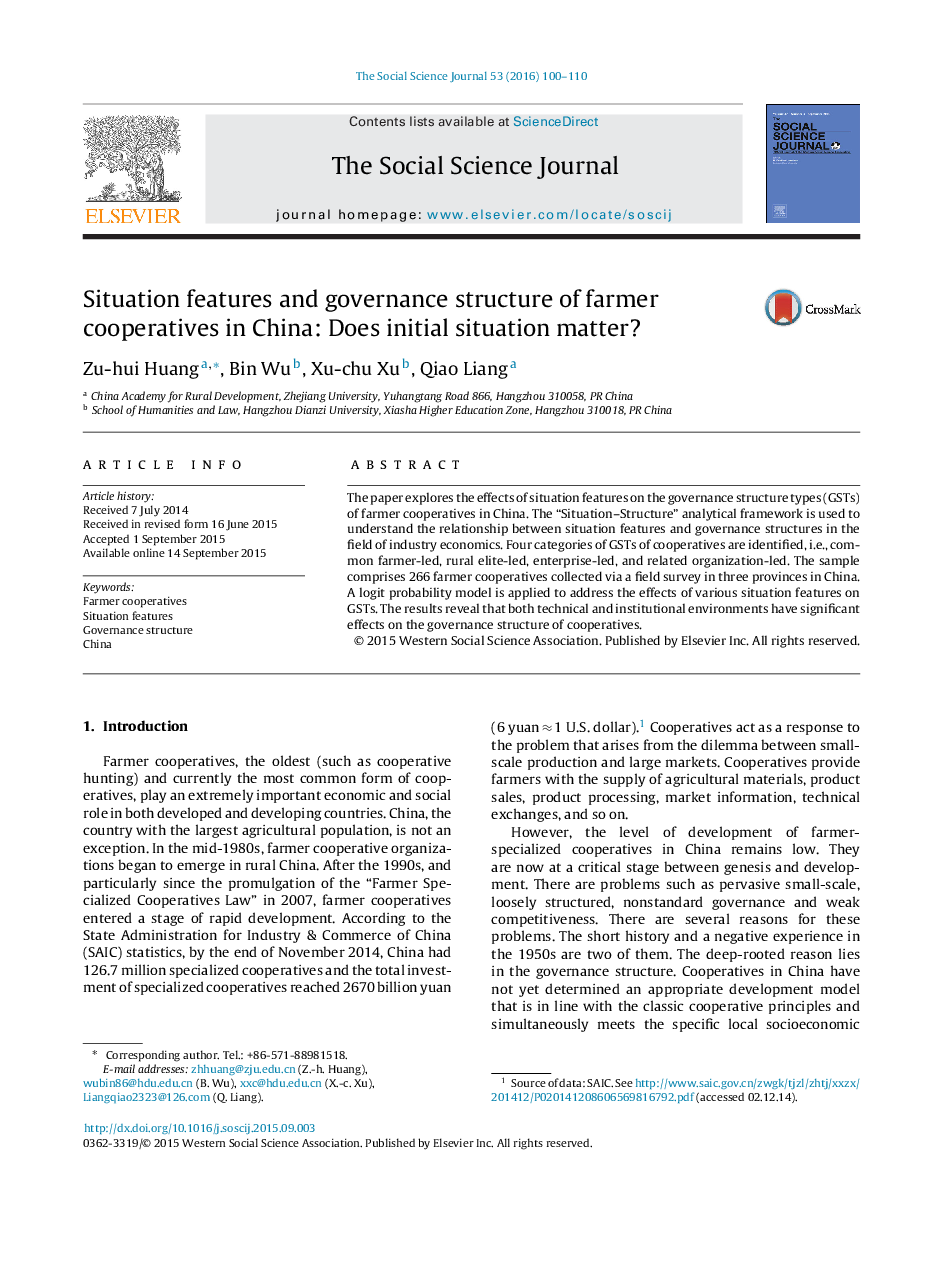| Article ID | Journal | Published Year | Pages | File Type |
|---|---|---|---|---|
| 139978 | The Social Science Journal | 2016 | 11 Pages |
•Agricultural cooperatives began to emerge in China since the mid-1980s, as a new form of agricultural production that better handles challenges brought by market shifts and globalization.•Little research has been done to understand factors that decide the governance structure types (GSTs) of cooperatives in China.•Using large sample data from three typical provinces, this paper examines the mechanism of situation features on the GSTs of cooperatives.•The results revealed that the technical and institutional environment features have significant impacts on the GSTs of cooperatives.
The paper explores the effects of situation features on the governance structure types (GSTs) of farmer cooperatives in China. The “Situation–Structure” analytical framework is used to understand the relationship between situation features and governance structures in the field of industry economics. Four categories of GSTs of cooperatives are identified, i.e., common farmer-led, rural elite-led, enterprise-led, and related organization-led. The sample comprises 266 farmer cooperatives collected via a field survey in three provinces in China. A logit probability model is applied to address the effects of various situation features on GSTs. The results reveal that both technical and institutional environments have significant effects on the governance structure of cooperatives.
